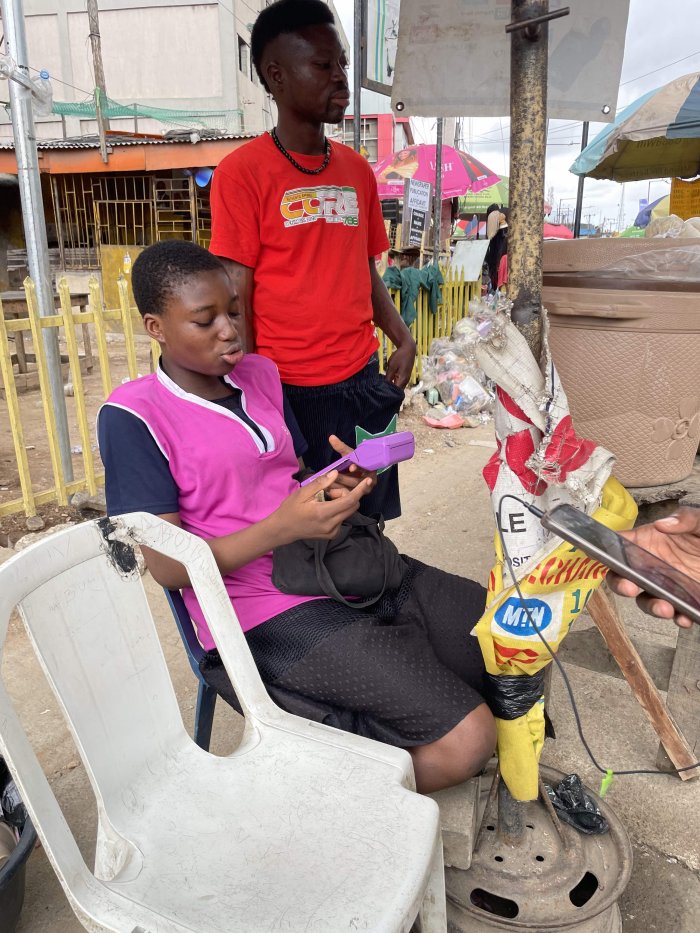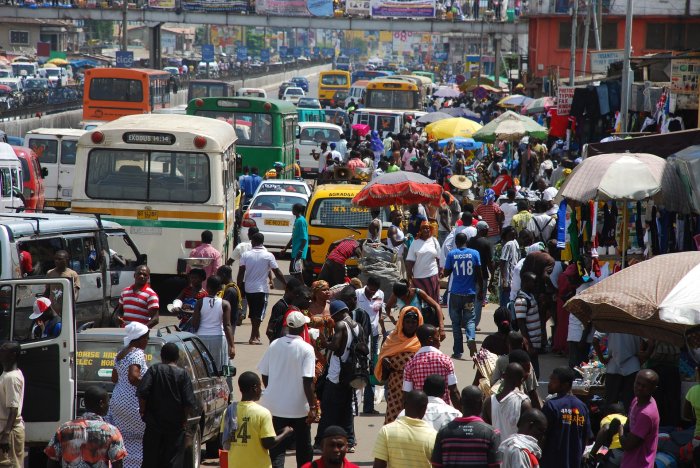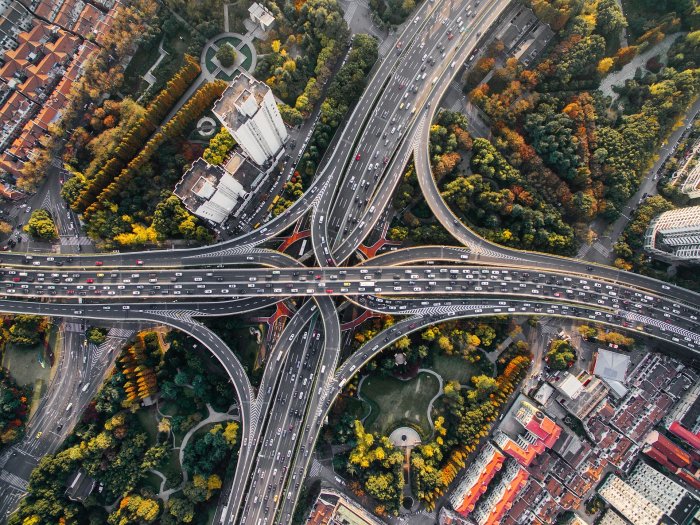Urbanization in Africa: Connecting the histories to contemporary and possible futures
Africa is urbanizing fast; on average at 4.4%. With close to one billion urban residents, the growth will continue and most likely double by 2050. On average, 60% of Africa's urban residents live in slums with an estimated 34% of its population living in cities with more than one million inhabitants.[i] Africa’s urbanization trajectory over the last 100 years can be described as diverse between countries and regions.
Some countries, such as those in West Africa, experienced early urbanization, while others urbanized in the 19th and 20th centuries largely due to natural resources development. Most African countries have the biggest proportion of the urban population concentrated in their capital cities. Some, for example in East Africa, are late urbanizing countries with agrarian economies forming their economic backbone. A few counties such as Chad, Niger and Malawi are considered to be at an early stage of urbanization.
There are a number of megacities such as Cairo, Lagos and Kinshasa alongside numerous smaller cities and towns. The cities portray differing population sizes and spatial extents (UN-Habitat, 2008). The urbanization trajectory of Africa has posed both challenges and opportunities: challenges of addressing existential poverty, infrastructure deficit and institutions that are not responsive enough to the challenges; opportunities associated with a youthful population, ingenuity, creativity around innovations that have economic potential coupled with alternative infrastructure systems. The urbanization process brings new governance challenges, most of which are rooted in internationalized urban development strategies.

Banking on the street
Sustainable Development Goal 11 on inclusive and resilient cities points to a need for urban transformation in Africa. Such transformations would have to rethink several issues drawing on the multiple lessons explained in some detail as opportunities in this article. Lessons are drawn from increasing calls to rethink the planning of cities, governance structures, urban financing, siloed urban development, integrating the majority low income, innovative economic strategies and alternative infrastructure systems. Without rethinking these broad urban issues, achieving urban transformation based on current strategies would require a deconstruction of a large part of these cities.
Over the years, city authorities in Africa have continued to assume that with planning, services, infrastructure and housing would improve. But data shows that deficits in the basic services and utilities widen if only formal utility systems are assessed. The deficit in infrastructure and services highlights the inequalities in many of these cities but also the inconsistencies of the urban governance institutions.
Many urban development plans have achieved insignificant successes because they largely remain at a strategic level and less at the neighbourhood scale where there is a disjuncture between envisaged plans and actual developments (Lwasa, 2013). The coupling of multiple challenges has rendered urban governance and planning a failure in many of the cities, resulting in continued organic development, the emergence of an informal economy and diverse infrastructure and services that contrast the centralized infrastructure systems. Centralized infrastructure service systems are often envisaged as the benchmark for measuring the progress of a city, and indeed many city authorities have grounded their performance measures in, for example, how many kilometres of road are constructed, how many houses are connected to water or sanitation, what proportion of waste is collected against revenue accruals from urban municipal services and collectible rents.
Against the backdrop of the preceding synthesis of the urbanization challenge, this article postulates that urbanization in Africa provides good lessons to draw from and design, implement and promote alternative pathways for urban development. From housing, diverse infrastructure, innovative livelihood activities, patterns of growth and sprawl, economy, labour market, industrious innovativeness and social differentiation, African cities of all sizes still offer opportunities, careers and lifetime experiences for many people in Africa (Ernstson et al., 2010; Simon, 2010; UN-Habitat, 2008). Urban Africa has demonstrated sustaining of livelihoods and provided diverse opportunities that create compelling reasons to rethink the city in Africa (Lwasa, 2014).
Diversity in urban Africa
Urban Africa illustrates diversity in many aspects: spatial imprint, governance systems, urban economies, distinctiveness of social income groups, inequalities, the nature of infrastructure and biophysical ecologies. In terms of spatial imprint, urban Africa has emerged with multiple patterns or mosaics that have semblances. This is related to the shape and density of cities, with large cities having areas with low density with, in many cases, the footprint of cities growing faster than the population. These are mainly observed in respect to the types and layout of houses, roads and streets, land-use configuration and green spaces. While most cities and towns are managed by institutions with historical roots in the emergence of modern planned cities, they have all continued interactions and features of formal and informal arrangements of governance. Where service and utility gaps exist, informal governance institutions have emerged; but at the same time formal institutions are riddled with informality in achieving their public service mandates.

Congested city
In respect to urban economies, urbanization in Africa is yet to achieve its full economic potential. Economic transformation and growth have not followed urbanization in most of Africa. The economic activities within cities are diverse with manufacturing, export-oriented infrastructure and small to medium-scale industry occurring on the foundations of a large informal economy. Trading, micro-manufacturing, recycling and urban services that are different from centralized services are characteristic of Africa. Around 60% of urban unemployment and over 90% of jobs are informal. Diversity is also depicted by the provision of diverse infrastructure including off-grid, hybrid and heterogeneous basic utilities (water, sanitation, energy, roads and social services).
African cities also have high inequality, with Gini coefficients on average of 0.54. Social inequality is also illustrated by the differing qualities of houses, roads, infrastructure, sanitation options, waste collection coverage and access to public green space. Issues of eviction threats from land occupied for decades are common in many African cities. Land grabbing has also not spared the critical ecological zones in urban Africa, including agricultural land that is important for maintenance of food security. But perhaps some of the negative consequences of disparate urban governance systems are in respect to how wastes are exported to peri-urban and rural areas, affecting the ecosystems and causing feedback consequences of polluted water sources on which cities rely.
Opportunities in urban Africa
African cities are areas of concentrated resource consumption but also places where ingenious innovations that offer alternative development approaches have taken root.
There are probably possibilities, but some of these opportunities are embodied in the youthful population that is employable but not in mainstream formal employment. Thus micro-small-medium-enterprises (MSMEs) with links to global value chains have emerged but yet to be scaled up. MSMEs can be a vehicle for localizing globalized processes and prosperity through disruptive and innovative technologies and hybridized infrastructure. The potential and expandable solutions could enhance equity, address climate change, create sustainable cities and build resilient urban systems.
Thus harnessing these opportunities and creating pathways to expand the possibilities can provide alternative pathways to urban development in Africa. The importance of Africa and cities in the Global South in the transition from path-dependence requires radical system changes in physical, institutional and financing mechanisms, transformative governance and innovative financing.
References
- Ernstson, H., Leeuw, S.E., Redman, C.L., Meffert, D.J., Davis, G., Alfsen, C., Elmqvist, T., 2010 Urban Transitions: On Urban Resilience and Human-Dominated Ecosystems. AMBIO 39, 531–545.
- Lwasa, S., 2014 Managing African urbanization in the context of environmental change. INTERdisciplina 2, 263–280.
- Lwasa, S., 2013 Planning innovation for better urban communities in sub-Saharan Africa: The education challenge and potential responses. Town and Regional Planning 60, 38–48.
- Simon, D., 2010 The Challenges of Global Environmental Change for Urban Africa. Urban Forum 21, 235–248. https://doi.org/10.1007/s12132-010-9093-6
- UN-Habitat, 2008 The State of African Cities. United Nations Human Settlements Programme, Nairobi.
Footnote
[i] OECD/SWAC (2020). Africa’s Urbanization Dynamics 2020. OECD Publishing, Paris.
Urbanization in Africa: Connecting the histories to contemporary and possible futures

Shuaib Lwasa is professor of urban resilience and global development at ISS.
Urbanization in Africa: Connecting the histories to contemporary and possible futures
You may also be interested in ...
Professor Shuaib Lwasa on mitigating the effects of global warming
